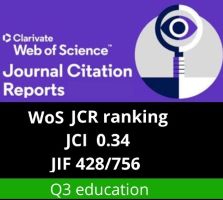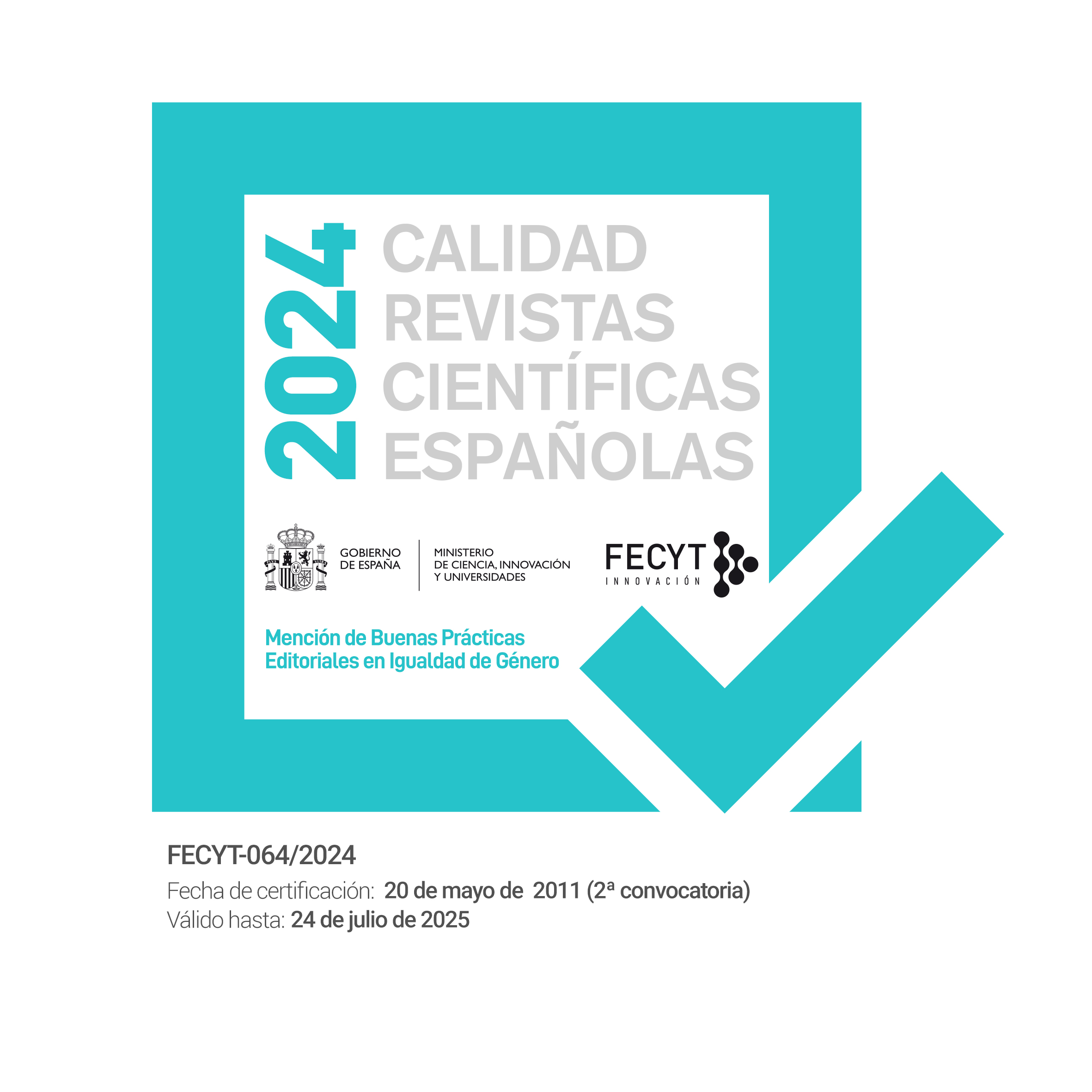Leisure routes from research: trends, challenges and contributions
DOI:
https://doi.org/10.7179/PSRI_2012.20.03Keywords:
leisure, leisure itineraries, leisure experiences, life cycle, continuity, change, life styleAbstract
Leisure itineraries are part of the new research topics associated with Leisure Studies. Its knowledge brings us closer to the processes related to the birth, development and decline of our hobbies and interests. It helps us understand our leisure and its impact on life satisfaction, but also sheds light on the role of practices that have to do with our self-identification and health habits associated with the quality of life. The article focuses on the accuracy of the concept and discusses the main directions of research, enabling an approach to the current knowledge about itineraries. The authors referred to, mainly Americans, question the impact of continuity and change and, on the other hand, analyze the impact of interpersonal differences in the evolution of itineraries.
From a strictly academic approach, one of the main contributions of the application of the concept of leisure itineraries to the study of consolidation lies in the treatment of leisure as a process. This point of view moves us away from the study of purely objective aspects and leads us to personal implications, without which the meaning of leisure experience is difficult to understand. At the end of the paper, the challenges the study opens and the contributions involving both the orientation of the educational offer and the pedagogy of leisure are presented. The study of leisure itineraries allows us to reinforce the importance of leisure as a factor of human development throughout life and legitimizes its support through specific policies, management models and intervention actions.
Downloads
References
Agahi, N; Ahacic, K & Parker, M. (2006). Continuity of participation from middle age to old age. Journal of Gerontology, 61, 340-346.
Armstrong, G. K. & Morgan, K. (1998). Stability and change in levels of habitual physical activity in later life. Age and Ageing, 27, 17–23.
Atchley, R. C. (1989). A continuity theory of normal aging. The Gerontologist, 29, 183-190.
Bellver, M C. (2005): “La Educación para la Salud en la familia como prevención de conductas antisociales”. Pedagogía Social. Revista Interuniversitaria, 12-13, pp. 43-57.
Bigné, E.; Font, X. & Andreu, L. (2000). Marketing de destinos turísticos. Análisis y estrategias de desarrollo. Madrid: Esic.
Cecchini, J.A., Méndez, A. & Contreras, O.R. (2005). Motivos de abandono de la práctica del deporte juvenil. Cuenca: Universidad de Castilla-La Mancha.
Cuenca, M., (2000). Ocio humanista. Dimensiones y manifestaciones actuales del ocio. Documentos de Estudios de Ocio, 16. Bilbao: Universidad de Deusto.
Cuenca, M., (coord.) (2006). Aproximación multidisciplinar a los Estudios de Ocio. Documentos de Estudios de Ocio, 31. Bilbao: Universidad de Deusto.
Cuenca, M., Aguilar, E. y Ortega, C., (2010). Ocio para innovar. Documentos de Estudios de Ocio, 42. Bilbao: Universidad de Deusto.
Cuenca, J. (2011). El valor de la experiencia de ocio en la Modernidad Tardía. Bilbao: Universidad de Deusto. Tesis Doctoral.
Cumming, E. & Henry, W., (1961). Growing old. New York: Basic Books.
Erikson, E. H. (1985). El ciclo vital completado. Buenos Aires. Paidós.
European Commission. Directorate General Education and Culture & TNS Opinion & Social (2010). Sport and physical activity. Eurobarometer 72.3. Brussels: European Union. http://ec.europa.eu/publicopinion/index_en.htm
Fernández, E. (2007). Barreras para la práctica deportiva de las mujeres españolas durante la infancia y la juventud. ADOZ. Revista de Estudios de Ocio, 31, 49-57.
García Ferrando, M. (2006). Postmoderrnidad y deporte: entre la individualización y la masificación: encuesta sobre hábitos de los españoles 2005, Madrid: Ministerio de Educación, Cultura y Deporte. Consejo Superior de Deportes.
García Ferrando, M. & Llopis, R. (2011). Ideal democrático y bienestar personal. Encuesta sobre los hábitos deportivos en España 2010. Madrid: Consejo Superior de Deportes & Centro de Investigaciones sociológicas.
Godbey, G. (1999). Leisure in your life. An exploration. 5th edition. State Collage: Venture Publishing.
Gordon; C.; Gaitz, C.M. & Scott, J. (1976). Leisure and lives. Personal expressivity across life span. In R.H. Binstock & E. Shanas (eds.). Handbook of aging and the social sciences (pp. 310-341). New York. Van Nostrand Reinhold.
Havighurst, R. J. (1973). Developmental tasks and education. New York: David Mcakay. http://feadef.iespana.es/santander/conf/co/o.pieron.pdf (Fecha de consulta: octubre 2008).
Hubbard, J. & Mannell, R. (2001). Testing competing models of the leisure constraint and negotiation process in a corporate employee recreation setting. Leisure Sciences, 23, 145–163.
Hutchinson, S. L. & Kleiber, D. A. (2005). Leisure, constraints, and negative life events: Paradox and possibilities. In E. L. Jackson (ed.), Constraints to leisure (pp. 137–150). State College, PA: Venture.
Iso-Ahola, S. (1980a). The social psychology of leisure. Dubuque: William Brown.
Iso-Ahola, S. (1980b) Toward a dialectical social psychology of leisure and recreation. In S. Iso-Ahola (ed.). Social psychology perspectives on leisure and recreation (pp. 19-37), Springfield, IL.: Charles Thomas.
Iso-Ahola, S.; Jackson, E. & Dunn, E. (1994). Starting, ceasing and replacing leisure activities over the lifespan. Journal of Leisure Research, 26, 227-249.
Iwasaki,Y.& Smale, B. J. A. (1998). Longitudinal analyses of the relationships among life transitions, chronic health problems, leisure, and psychological well-being. Leisure Sciences, 20, 25–52.
Jackson, E.L. & Dunn, E. (1988). Integrating ceasing participation with other aspects of leisure behavior. Journal of Leisure Research, 20, 31-45.
Jackson, E. L. (2005). Impacts of life transitions on leisure and constraints to leisure. In E.L. Jackson (ed.), Constraints to leisure, (pp. 115–136). State College, PA: Venture.
Jackson, E.L. (dir.) (2006). Leisure and the quality of life: impacts of social, economic and cultural development: Hangzhou Consensus. Hangzhou, China: Zhejiang University Press.
Janke, M.; Davey, A. & Kleiber, D.A. (2006). Modeling change in older adults´ leisure activities. Leisure Sciences, 28, 285-303.
Kelly, J.R. & Godbey, G. (1992). The sociology of leisure. State College: Venture Publishing.
Kleiber, D. A. (1999). Leisure experience and human development. A dialectical interpretation. New York: Basic Books.
Kleiber, D.A.; Walker, G.J. & Mannell, R.C. (2011). A social psychology of leisure (2ª ed.). State College: Venture Publishing.
Lazcano, I.; Madariaga, A. & Doistua, J. (2010). El envejecimiento activo y su incidencia en la experiencia de ocio. ADOZ. Revista de Estudios de Ocio, 33, 117-147.
Lee, R. E. & King, A. C. (2003). Discretionary time among older adults: How do physical activity promotion interventions affect sedentary and active behaviors? Annual in Behavioral Medicine, 25, 112–119.
Levinson, D. J. (1978). The season of a man´s life. New York: Alfred A. Knopf.
Martínez, S. (2002). Ocio y formación en la edad adulta. Desarrollo de actitudes y motivaciones hacia el ocio a través de un programa educativo. Bilbao: Universidad de Deusto. Tesis Doctoral.
Martínez de Quel Pérez, O.; Fernández, E. & Camacho, M.J. (2010). Percepción de dificultades para la práctica de actividad física en chicas adolescentes y su evolución con la edad. Apunts, 99, 1º trimestre, 92-99.
Masnou, M. & Puig, N. (1995). El acceso al deporte: los itinerarios deportivos. En D. Blázquez (ed.) La iniciación deportiva y el deporte escolar (pp. 371-394). Barcelona: Inde Publicaciones
McClelland, K.A. (1982). Self conception and life satisfaction: integrating age subculture and Activity theory. Journal of Gerontology, 37 (6), 723-732.
McGuire, M; Dottavio, F. & O´Leary, J. (1987). The relationship of early life experiences to later life leisure envolvement. Leisure Sciences, 9, 251-257
Molinero, O.; Salguero, A.; Tabernero, B.; Tuero, C. y Márquez, S. (2005). El abandono deportivo: propuesta para la intervención práctica en edades tempranas. Lecturas: Educación Física y Deportes (Revista digital), 10, 90.
Monteagudo, M.J. (2008). Reconstruyendo la experiencia de ocio: características, condiciones de posibilidad y amenazas en la sociedad de consumo. En M.J. Monteagudo (ed.) La experiencia de ocio: una mirada científica desde los Estudios de Ocio (pp. 81-110). Documentos de Estudios de Ocio, 35. Bilbao: Universidad de Deusto.
Monteagudo, M.J. (2011). Los itinerarios de ocio deportivo. Estudio de los jóvenes de Bizkaia (1995-2005). Bilbao: Universidad de Deusto. Tesis Doctoral.
Neugarten, B.; Havighurst, R. y Tobin, S. (1961). The measurement of life satisfaction. Journal of Gerontology, 16, 134-143.
Nimrod, G & Kleiber, D.A. (2007). Reconsidering change and continuity in later life: toward an innovation theory of successful aging. International Journal of Aging and Human Development, 65, 1-22.
Pieron, M. (2001). Participación de jóvenes europeos en actividades físicas y deportivas, actitudes hacia la escuela y la Educación Física. Consecuencias pedagógicas (112-132). En V. Mazón et al. (eds.) Reflexiones y perspectivas de enseñanza de la Educación Física y el Deporte escolar en el nuevo milenio. Santander: A.D.E.F. Cantabria.
Puig, N. & Masnou, M. (1988). Los itinerarios deportivos de la población juvenil. Revista de Estudios de Juventud, 32, 45-56.
Reitzes, D.C.; Mutran, E.J. & Verrill, L.A. (1995). Activities and self-esteem. Research on Aging, 17, 260-277.
San Salvador del Valle, R. (2008). O fenómeno do Ócio nas Cidades do século XXI. En M. Cuenca & J. Clerton (orgs.) Ócio para viver no Século XXI (pp.107-124). Fortaleza. As Musas.
Sanz, E. (2005). La práctica físico-deportiva en el tiempo libre en universitarios. Análisis y propuestas de mejora. Logroño: Universidad de La Rioja.
Sagy, S.; Antonovsky, I. & Adler, I. (1990). Explaning life satisfaction in later life: The sense of coherente model and activity theory. Behavior, Health and Aging, 1 (1), 11-25.
Searle, M.A.; Mactavish, J.B. & Brayley, R.E. (1993). Integrating ceasing participation with other aspects of leisure behavior. Journal of Leisure Research, 25 (4), 389-404.
Son, J.S.; Mowen, A. J. & Kerstetter, D.L. (2008). Testing alternative Leisure Constraint Negotiation Models: an extension of Hubbard and Mannell’s Study. Leisure Sciences, 30, 198–216.
Stebbins, R. A. (2000). Un estilo de vida óptimo de ocio: combinar ocio serio y casual en la búsqueda del bienestar personal. En M. Cuenca (ed.) Ocio humano y desarrollo. Propuestas para el 6º congreso Mundial de Ocio (pp. 109-116). Bilbao: Universidad de Deusto.
Telama, R.; Naul, R.; Nupponen, H.; Rychtecky, A. & Voulle, P. (2002). Physical fitness, sporting lifestyles and olympics ideals: cross-cultural studies on youth sport in Europe. International Council of Sport Science and Physical Education. Schorndorf: Verlag Karl Hofman.
Trilla, J. (1984). La educación no formal. Barcelona: Barcanoa.
Uth, T.C. (1996). Definitions of life style and its applications to travel behavior. www.i4.auc.dk/trg/td/papers/papers96/tr_og_ad/uth/uth.pdf
Yoesting, D.R. & Christensen, J.E. (1978). Reexamining the significance of childhood recreation patterns on adult leisure behavior. Leisure Sciences, 1, 27-38.
Downloads
Published
How to Cite
Issue
Section
License
Copyright (c) 2014 Pedagogia Social. Revista Interuniversitaria

This work is licensed under a Creative Commons Attribution-NonCommercial 3.0 Unported License.
Copyright and right to archive
The published version of the articles can be self-archived by their authors in open access institutional and thematic repositories. However, Pedagogía Social. Revista Interuniversitaria must authorize partial or global reutilisation on new papers or publications.
Published papers must be cited including the title of the journal Pedagogía Social. Revista Interuniversitaria, issue, pages and year of publication
Ethical responsibilities
Pedagogía Social. Revista Interuniversitaria does not accept any material that has been previously published in other documents or publications. Authors are responsible for obtaining the required permissions for partial or global reproduction any material from other publications, and to correctly quote its origin.
Pedagogía Social. Revista Interuniversitaria is obliged to detect and report fraudulent practices.
Only those who have intellectually contribute to the development of the paper must appear as authors.
The journal expects authors to declare any commercial partnership that might entail a conflict of interest with respect to the submitted article.
Authors must mention in the article, preferably in the “methodology” section, that the procedures used during the samplings and controls have been made after getting informed consent.
The journal will not use any received contribution in a way other than the goals described in these guidelines.
Copyright Notice
© Pedagogía Social. Revista Interuniversitaria. Papers published in both the printed and online versions of this Journal are property of Pedagogia Social. Revista Interuniversitaria, being required to cite the source in any partial or total reproduction.
Unless otherwise stated, all content of this electronic journal is distributed under "Creative Commons Attribution-Non commercial 3.0 Spain" (CC-by-nc) license for use and distribution. The informative version and the legal text of this license is available here. This has to be expressly stated in this way when necessary.





